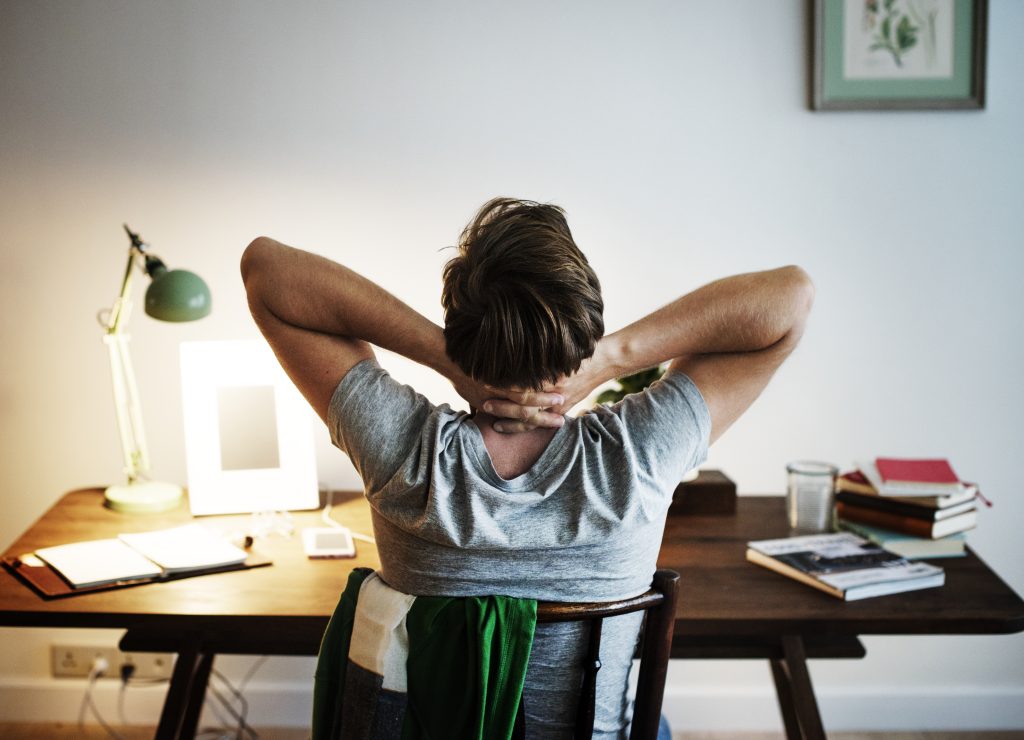5 Effective Strategies for Managing Stress and Anxiety
7 min read
Stress and anxiety are prevalent in today’s society and can have a negative impact on an individual’s mental and physical health. In fact, according to the American Psychological Association, 70% of adults in the United States experience some form of stress or anxiety on a daily basis. However, stress management techniques can help combat these issues by reducing stress hormones, blood pressure, and heart rate. In this article, we aim to provide 5 effective strategies for managing stress and anxiety, from physical activity to relaxation techniques. It is important to note that if stress and anxiety continue to negatively impact one’s daily life, seeking professional help from a health professional or mental health expert is crucial for overall well-being.
1. Physical Activity
Physical activity is a critical aspect of effective stress management. Engaging in regular physical activity has numerous benefits, including reducing stress and improving overall health. It is essential to note that being physically active can counterbalance some of the negative effects of chronic stress, including reducing stress hormones such as cortisol, lowering blood pressure, and improving heart rate.
There are various forms of physical activity that can be incorporated into daily routines to help combat stress. For instance, taking a walk, running, or cycling can help improve physical health and contribute to reducing stress levels. Yoga, Pilates, and meditation are also effective ways of managing stress and anxiety.
It is essential to note that not only is physical activity an effective way to manage stress, but it is also beneficial for mental health challenges. Research has shown that engaging in regular physical activity can help alleviate symptoms of anxiety and depression, increase self-esteem, and improve overall mood.
2. Deep Breathing Exercises
Deep breathing exercises are an effective stress management tool that can be performed anywhere, at any time. One of the most popular techniques is diaphragmatic breathing, also known as belly breathing, which involves taking deep breaths from the diaphragm rather than the chest. This technique helps to slow down breathing and reduce stress levels by increasing oxygen levels in the body. To perform diaphragmatic breathing, begin by sitting or lying down in a comfortable position, then inhale through the nose for 4 seconds, hold the breath for 7 seconds, and exhale slowly through the mouth for 8 seconds.
Another beneficial deep breathing technique is alternate nostril breathing, which involves breathing through one nostril at a time while holding the other nostril closed. This technique helps to balance energy in the body, calm the mind and reduce anxiety levels. To perform alternate nostril breathing, sit comfortably and place your left hand on your left knee, then bring your right hand towards your face and use your thumb to hold your right nostril closed. Inhale through the left nostril for 4 seconds, then close the left nostril using your ring finger and exhale slowly through the right nostril for 8 seconds. Continue this sequence for several minutes, alternating between nostrils.
Incorporating deep breathing exercises into daily routines can have a positive impact on stress management and overall well-being. Benefits of regular deep breathing exercises include reducing stress levels, lowering blood pressure, decreasing heart rate, and improving mental clarity. To make deep breathing exercises a part of daily life, try setting reminders on your phone or incorporating them into existing mindfulness or meditation practices. With consistent practice, deep breathing exercises can become a valuable tool for managing stress and promoting relaxation.
3. Progressive Muscle Relaxation
Progressive Muscle Relaxation (PMR) is a technique that can be used to manage stress and anxiety. The process involves tensing and then relaxing specific muscle groups in the body, starting from the toes and moving upwards towards the head. The idea behind PMR is that by becoming aware of muscle tension and actively relaxing those muscles, the body can achieve a state of deep relaxation.
To perform PMR, find a comfortable position and take a few deep breaths. Begin by tensing the muscles in your toes for a few seconds, then release the tension and allow your muscles to relax completely. Repeat this process for the major muscle groups in the body, such as the legs, abdomen, chest, arms, and neck.
While engaging in PMR, it’s important to focus on deep breathing and using visualization techniques to actively relax the muscles. As you tense a muscle group, imagine a feeling of tension and tightness, and as you release the tension, imagine a sense of relaxation and ease spreading throughout your body. Pay attention to the sensations of tension and relaxation in each muscle group, and allow yourself to fully release any pent up muscle tension.
There are various guided PMR exercises available online or through mental health professionals that can enhance the experience and make it more effective. These exercises can help to reduce muscle tension, decrease stress levels, and promote a sense of calm and relaxation. By incorporating PMR into your daily routine, you can effectively manage stress and anxiety by addressing the physical symptoms associated with these conditions.
4. Behavioral Therapy Techniques
Behavioral therapy is a form of therapy that is focused on changing negative behaviors and attitudes that contribute to stress and anxiety. This type of therapy is often used in conjunction with other forms of treatment, such as medication or talk therapy. Here are some common behavioral therapy techniques used to manage stress and anxiety:
1. Cognitive Behavioral Therapy (CBT)
CBT is a type of therapy that focuses on identifying and changing negative thought patterns and behaviors that contribute to stress and anxiety. This type of therapy involves working with a therapist to identify negative thought patterns and replace them with positive ones. For example, if you tend to catastrophize situations by imagining the worst-case scenario, your therapist might teach you to challenge those thoughts and focus on more positive outcomes. In addition to changing negative thought patterns, CBT also involves learning new coping skills and developing a plan to manage stressful situations.
2. Exposure Therapy
Exposure therapy is a type of therapy that involves gradually exposing a person to a feared object or situation in order to help them overcome their anxiety. For example, if you have a fear of flying, your therapist might start by having you look at pictures of airplanes and gradually work up to actual flights. The idea behind exposure therapy is that by exposing yourself to the feared object or situation, you will eventually become desensitized to it and your anxiety will diminish.
3. Stress Inoculation Training
Stress inoculation training involves teaching a person how to cope with stressful situations by building up their resilience over time. This type of therapy involves teaching a person relaxation techniques, such as deep breathing and muscle relaxation, and helping them develop problem-solving skills. The goal of stress inoculation training is to help a person become more resilient to stress so that they are better equipped to handle stressful situations that arise in everyday life.
4. Applied Relaxation
Applied relaxation is a technique that involves combining relaxation techniques with the gradual exposure to situations that cause anxiety. This technique can be helpful for people who experience physical symptoms of anxiety, such as increased heart rate or sweating. Applied relaxation involves learning relaxation techniques, such as deep breathing or muscle relaxation, and then applying those techniques in situations that cause anxiety. For example, if you have a fear of public speaking, you might practice deep breathing and muscle relaxation techniques before giving a speech.
5. Nutrition and Supplements
Nutrition plays a critical role in managing stress and anxiety. A healthy diet consisting of nutrient-dense foods can help improve your overall mood and combat stress levels. Fruits, vegetables, and whole grains are excellent examples of nutrient-dense foods that can provide the vitamins and minerals essential for stress relief.
In addition to a healthy diet, supplements can also play a significant role in managing stress levels. Three popular supplements known for their stress-relieving benefits are magnesium, omega-3 fatty acids, and probiotics.
Magnesium is an essential mineral that is involved in many bodily functions, such as regulating nerve and muscle function and controlling blood pressure. Studies have found that magnesium supplements can help reduce stress levels and improve sleep quality, making it an effective supplement for those struggling with anxiety.
Omega-3 fatty acids, found in fish oil supplements, have been linked to reducing levels of stress hormones and improving mood. These supplements can be particularly helpful for people experiencing chronic stress.
Probiotics are another supplement that has been studied for their potential stress-relieving benefits. These supplements contain live bacteria that can help improve gut health, which has been linked to reducing levels of stress and anxiety.
It is essential to consult with a health professional before taking any supplements, as some may interact with medications or have side effects.

Conclusion
In conclusion, managing stress and anxiety is crucial for maintaining both physical and mental health. In this article, we have discussed the importance of a healthy diet and the potential benefits of supplements such as magnesium, omega-3 fatty acids, and probiotics. However, it is essential to implement a combination of strategies, including relaxation techniques, daily exercise, and adequate sleep, to combat stress levels effectively. While these simple strategies may be effective for some, others may require professional help to manage their stress and anxiety. It is vital to seek help from a health professional if feelings of stress and anxiety become overwhelming and interfere with daily life.






